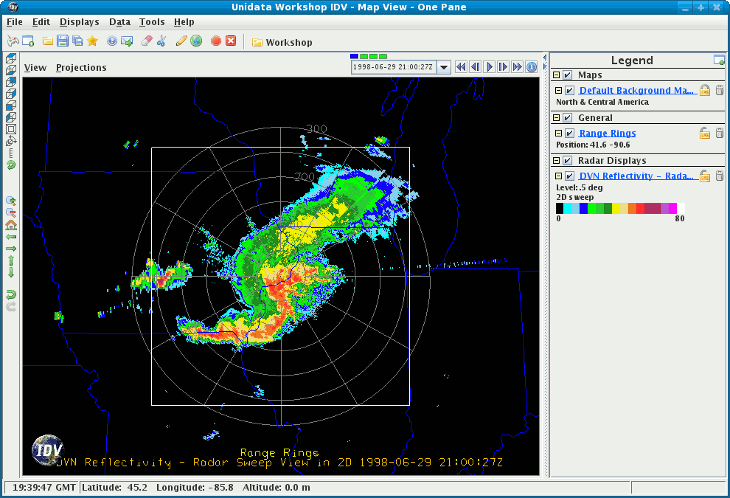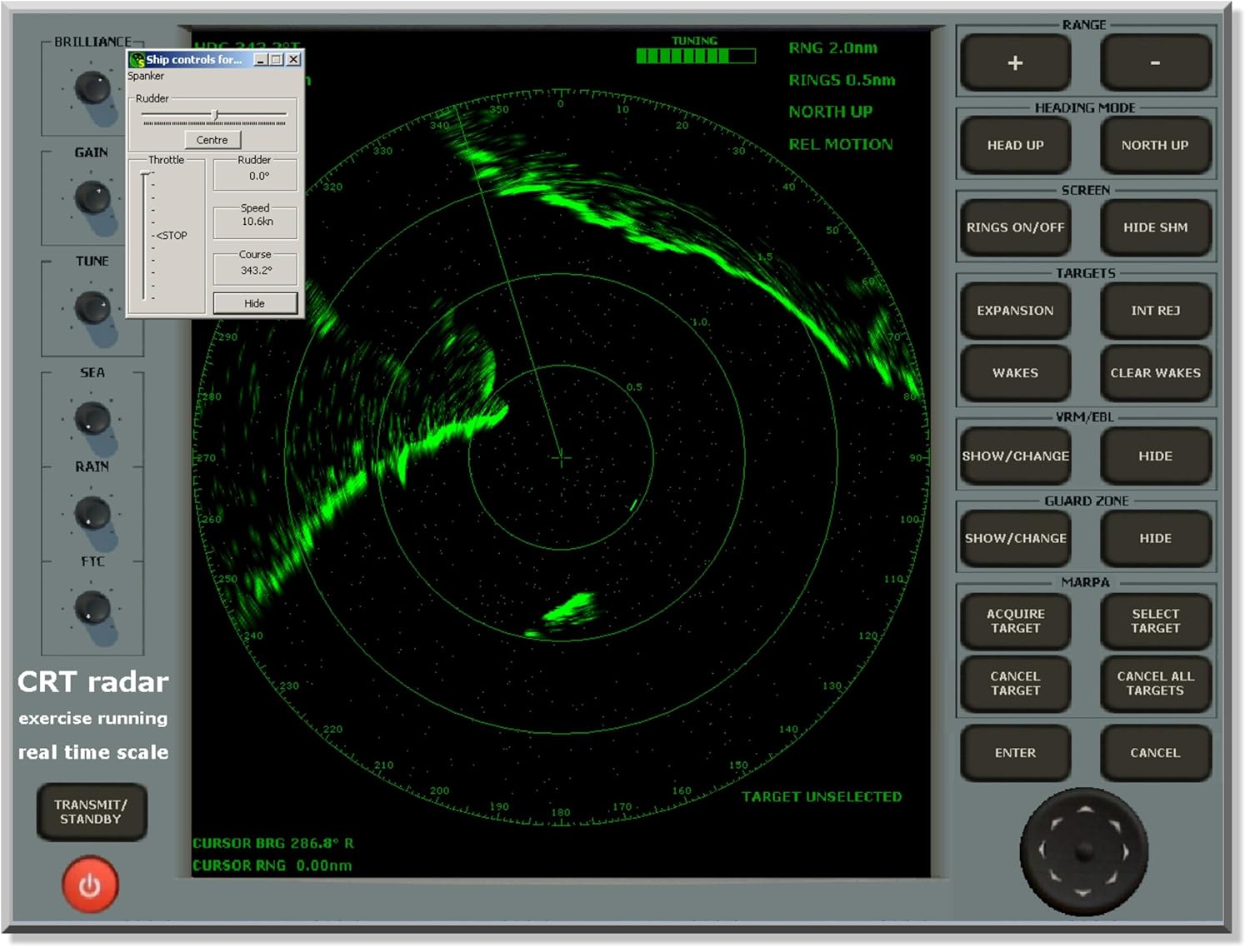
- Free Radar Simulation Software Free
- Radar Simulation software, free download
- Free Radar Simulation Software Developer
- Free Radar Simulation Software
Cloud Resolving Model Radar Simulator (CR-SIM)
Version 3.33 is now available (June 20, 2020).
Online Radar Simulation ATC-SIM is a browser-based air traffic control simulator. No plug-ins or additional software are required to play. Explore the other side of flight simulation! Flexible Extensible Radar Simulator v.rc.0.21 FERS is a simulatorfor common radarsystem designs. It supports both multistatic and monostatic radars,and both pulsed and CW systems.
General description
The idea behind CR-SIM is to create an accurate radar forward model operator consistent with several microphysics schemes that converts the model variables into the form of radar and lidar observables and thus to enable the direct comparison between numerical weather model output and radar/lidar observations. The CR-SIM can be applied in order to reproduce characteristic signatures commonly found in scanning (or vertical-pointing) polarimetric Doppler radar and profiling lidar observations, investigate uncertainties in the radar/lidar observation products, and examine the performance of different microphysical schemes and the assumptions related to scattering characteristics of observed cloud and precipitation systems.
VREX provides a high-fidelity radar system simulation that enables back-end testing in a test center environment without the front-end hardware. This innovative approach reduces the time and cost of sensor development in many ways. Marine Radar Simulator software, free download Descriptions:This Marine Radar SIMULATOR app will help you learn how to use Marine Radar DRS4W in an off-line environment before you navigate with the DRS4W onboard.How to use:Launch the app and press STBY to show Radar simulation echoes.
Input atmospheric models working with CR-SIM
The current version of CR-SIM uses input from the high resolution cloud resolving model (CRM) simulations and large eddy simulations (LES) including Weather Research and Forecasting (WRF) Model, ICOsahedral Non-hydrostatic general circulation model (ICON), the Regional Atmospheric Modeling System (RAMS), and System for Atmospheric Modeling (SAM), coupled with several microphysical schemes. The CR-SIM can be easily expanded to work on other models and microphysics schemes; it is written in FORTRAN and uses as input the model prognostic mass and number variables in the case of double-moment microphysics schemes or the explicit (bin) microphysics.
Incorporated microphysics schemes and corresponding CRMs:

| CRM | Microphysics scheme |
| Weather Research and Forecasting Model (WRF) | Morrison double moments (Morrison et al. 2005) Milbrandt and Yau multi moments (Milbrandt and Yau 2005a, 2005b) Thompson single and double moments (Thompson et al. 2008) Predicted particle properties (P3) scheme (Morrison and Milbrandt 2015) Spectral bin microphysics (Fan et al. 2012) |
| ICOsahedral Non-hydrostatic general circulation model (ICON) | Seifert and Beheng 2-moment (Seifert and Beheng 2006; Seifert 2008) |
| Regional Atmospheric Modeling System (RAMS) | Double moment (Cotton et al., 2003) |
| System for Atmospheric Modeling (SAM) | Tel Aviv University (TAU) two-moment bin microphysics (Tzivion et al. 1987; Feingold et al. 1996) Morrison double moments (Morrison et al. 2005) |
| Cloud Model 1 (CM1) [since V. 3.3.3, evaluation stage ] | Morrison double moments (Morrison et al. 2005) [since V. 3.3.3, evaluation stage ] |
Scattering calculation
The CR-SIM employs the T-matrix method for computation of scattering characteristics for cloud water, cloud ice, rain, snow, graupel and hail and allows the specifications of the following radar frequencies for scattering calculations: 3 GHz, 5.5 GHz, 9.5 GHz, 35 GHz and 94 GHz. For the lidar variable simulations, the T-matrix computation also provides scattering characteristics for cloud water (for ceilometer and micro pulse lider simulations) and cloud ice (for micro pulse lider simulations) at wavelengths of 905 nm for ceilometer and 353 and 532 nm for micro pulse lider.
Computed observables
The CR-SIM simulates polarimetric and Doppler radar moment variables including reflectivity at vertical and horizontal polarization, differential reflectivity, specific differential phase, specific attenuation at horizontal and vertical polarizations, specific differential attenuation, linear depolarization ratio, reflectivity-weighted particle fall velocity, mean Doppler velocity, and spectrum width. For the version 3.2 or later Doppler spectra are also computed. The computation of fall velocities is consistent with the computational method used in the specific microphysical package. The simulated lidar variables includes true and attenuated backscatter, extinction coefficient, lidar ratio, true and attenuated aerosol backscatter, aerosol lidar ratio, and molecular backscatter. The CR-SIM includes an optional package to emulate additional observational products from the simulated radar and lidar variables. The current version compute liquid water path considering the microwave radiometer field of view and the Active Remote Sensing of Cloud Locations (ARSCL) products.
CR-SIM is licensed under GNU GENERAL PUBLIC LICENSE (GNU GPL).
If you use the CR-SIM software to simulate WRF data used in publication, an acknowledgment would be appreciated. If you have any comments, suggestions for improvements, bug fixes or you need help to interface CR-SIM with your model output, please contact us (aleksandra.tatarevic@mcgill.ca; pavlos.kollias@stonybrook.edu; mariko.oue@stonybrook.edu; diewang@bnl.gov).
Acknowledgment
We would like to thank Dr. H. Morrison, Dr. Z. Feng and Dr. J. Fan, Dr. T. Matsui, and Dr. A. Fridlind for providing the WRF output data and for their valuable comments, suggestions and encouragement. Thanks are extended to Dr. M. Mech, Dr. P. Marinescu, Dr. T. Yamaguchi, and Dr. J. Peters for providing the ICON, RAMS, SAM, and CM1 output data, respectively, and for their valuable comments. We also would like to thank Dr. J. Vivekanandan for his Mueller-matrix-based code and Dr. M. I. Mishchenko for making his T-matrix codes public and freely available for research purposes.
Related publications

Oue, M., P. Kollias, K. W. North, A. Tatarevic, S. Endo, A. M. Vogelmann, and W. I. Gustafson Jr., 2016: Estimation of cloud fraction profile in shallow convection using a scanning cloud radar. Geophys. Res. Letters, 43,10998–11006, doi: 10.1002/2016GL070776.
Oue, M., P. Kollias, A. Shapiro, A. Tatarevic, and T. Matsui, 2019: Investigation of observational error sources in multi-Doppler-radar three-dimensional variational vertical air motion retrievals, Atmos. Meas. Tech., 12, 1999-2018, https://doi.org/10.5194/amt-12-1999-2019.
Oue, M., Tatarevic, A., Kollias, P., Wang, D., Yu, K., and Vogelmann, A. M., 2019: The Cloud Resolving Model Radar Simulator (CR-SIM) Version 3.2: Description and Applications of a Virtual Observatory, Geosci. Model Dev. Discuss., https://doi.org/10.5194/gmd-2019-207, in review.
Oue, M., Tatarevic, A., Kollias, P., Wang, D., Yu, K., and Vogelmann, A. M., 2020: The Cloud-resolving model Radar SIMulator (CR-SIM) Version 3.3: description and applications of a virtual observatory, Geosci. Model Dev., 13, 1975–1998, https://doi.org/10.5194/gmd-13-1975-2020.
Downloads
Latest CR-SIM
Download the software version 3.3:
ftp://ftp.radar.bnl.gov/outgoing/moue/crsim/src/crsim-3.33.tar.gz
Post processing codes
Download radar_filter (converting model grid to radar polar coordinate):
ftp://ftp.radar.bnl.gov/outgoing/moue/crsim/src/radar_filter_v1.2.1.tar.gz
User Guide version 3.3:
crsim-userguide-v3.3.3.pdf
Download File
Archives
Please contact us (aleksandra.tatarevic@mcgill.ca; mariko.oue@stonybrook.edu).
Features
Version 3.33: has been released (June 20, 2020):
Incorporated CM1 model coupled with Morrison 2-moment scheme (evaluation stage).
Fixed bugs for obtaining grid spacings for RAMS and SAM (this affected spectrum width computations).
- Fixed an issue occasionally happening when reading WRF Thompson solid hydrometeor species.
Version 3.32: has been released (March 26, 2020):
- Computation of ρhv was added.
Version 3.31: has been released (September 5, 2019):
- A bug was fixed.
Version 3.30: has been released (August 30, 2019):
Free Radar Simulation Software Free
The major change since the version 3.21:
- Adapted cloud number concentration and mu for rain in P3 for WRF v4.1.
- Fixed a bug in hydro_icon (max and minimum values for rain mixing ratio at each diameter bin).
- Modified computation of the specific attenuation at horizontal and vertical polarizations to include the dependencies of Ah and Av on the angular moments Improved stability of the software.
- Corrected inconsistencies when using real instead of double precision variables corrected in all files.
- The tolerance for all the tests modified from 1.e-10 to 1.e-4.
- The module wrf_var_mod.f90 copied to module wrf_rvar_mod.f90. Created the new wrf_var_mod.f90 with the same types and subroutines as wrf_rvar_mod.f90 but in double precision. The structures from wrf_rvar_mod.f90 are used for reading the input model data which are then copied and saved to corresponding structures from wrf_var_mod.f90.
- Indentation introduced in ReadInpWRFFile.f90 and ReadInpRAMSFile.f90
Version 3.21: Fixed a bug (April 10, 2019):
The major change since the version 3.20:
- Fixed a bug: When using –without-preloadlut –disable-openmp options, the compilation was failure.
Version 3.20 has been released (February 15, 2019):
The major changes since the last release (v.3.1) of the model include:
- Incorporated SAM TAU two-moment bin microphysics (liquid only) (MP_PHTSICS=70).
- Incorporated SAM Morrison 2-moment microphysics (MP_PHYSICS=75).
- Incorporated Doppler spectra generator.
- Incorporated a retrieval of particle size distribution parameters which are used in the Thompson scheme’s reflectivity calculation in WRF instead of those described in Thompson et al. (2008 & 2004).
- Introduced the parameter maxNumOfHydroTypes equal to the maximal number of hydrometeor types allowed (currently 8 for RAMS, MP=40). Corrected dimension for those variables whose dimension was not updated (i.e. was equal to less than maxNumOfHydroTypes).
- Added a new module phys_param_mod.f90 that should include all the physical parameters and constants used throughout the CR-SIM. The idea is to gradually exclude the use of hard-coded values.
- Fixed bug in test script when reporting if the test passes or fails.
- Added the new test with RAMS 2-moments microphysical scheme.
- Modified Makefile.am files so that ‘make clean’ does not remove configuration files.
- Updated processor version (configure.ac).
- Introduced progress messages in percentage.
- The main code and file crsim_subrs.f90 cleaned and introduced indentation.
EarthCARE Simulator (ECSIM)
The EarthCARE simulator provides end-to-end (forward and inversion) modeling of the instruments on board the European Space Agency EarthCARE mission. The instruments being considered for the EarthCARE platform are: An advanced lidar (ATLID), a Cloud pro_ling Radar (CPR), a Multi-spectral Imager (MSI) and Broad-Band Radiometer (BBR).
Radar Simulation software, free download
Data produced by a state-of-the-art, high-resolution cloud-resolving model (CRM) serve as the basis for creating `scenes’ that will be used as input to various radiative transfer programs and instrument simulation modules. This provides the ability to simulate satellite overpasses and subsequent measurement processes. The simulator must be capable of performing end-to-end simulations of the EarthCARE mission.The simulator must be well-suited for synergetic observation studies. The simulator should be able to handle a range of cases from realistic complex cloudy scenes based on model data or more simple scenes which may be specified by the user.
Free Radar Simulation Software Developer
Radar Doppler spectra simulator
Free Radar Simulation Software
The radar Doppler spectra simulator is applicable to the MMCR, WACR and SACR’s systems of the ARM program and uses input from bin-microphysics, high resolution numerical models and produces synthetic radar Doppler spectra. The input parameters to a Doppler spectra simulator are both microphysical (e.g., particle size, shape, phase and number concentration) and dynamical (e.g., resolved wind components and sub- grid turbulent kinetic energy). The Signal-to-Noise Ratio (SNR) is used to determine the amount of noise added throughout the spectrum and the spectral smoothing due to spectral averages is included to reproduce the averaging realized by cloud radars on successive returns. Thus, realistic Doppler spectra are obtained, and several parameters that relate to the morphological characteristics of the synthetically generated spectra are computed using the same algorithm used by ARM to develop the micro-ARSCL VAP.
Download the software